Football players know that having the right gear is essential for performance, and socks are no exception. The best football socks are designed to enhance comfort, support, and overall performance, helping players stay at their peak throughout the game. From providing the right fit to ensuring that moisture is wicked away from the feet, these socks can make all the difference. This article will guide you through the essential features to look for when choosing the best football socks, the different types available, and why investing in quality socks is crucial for every football player.
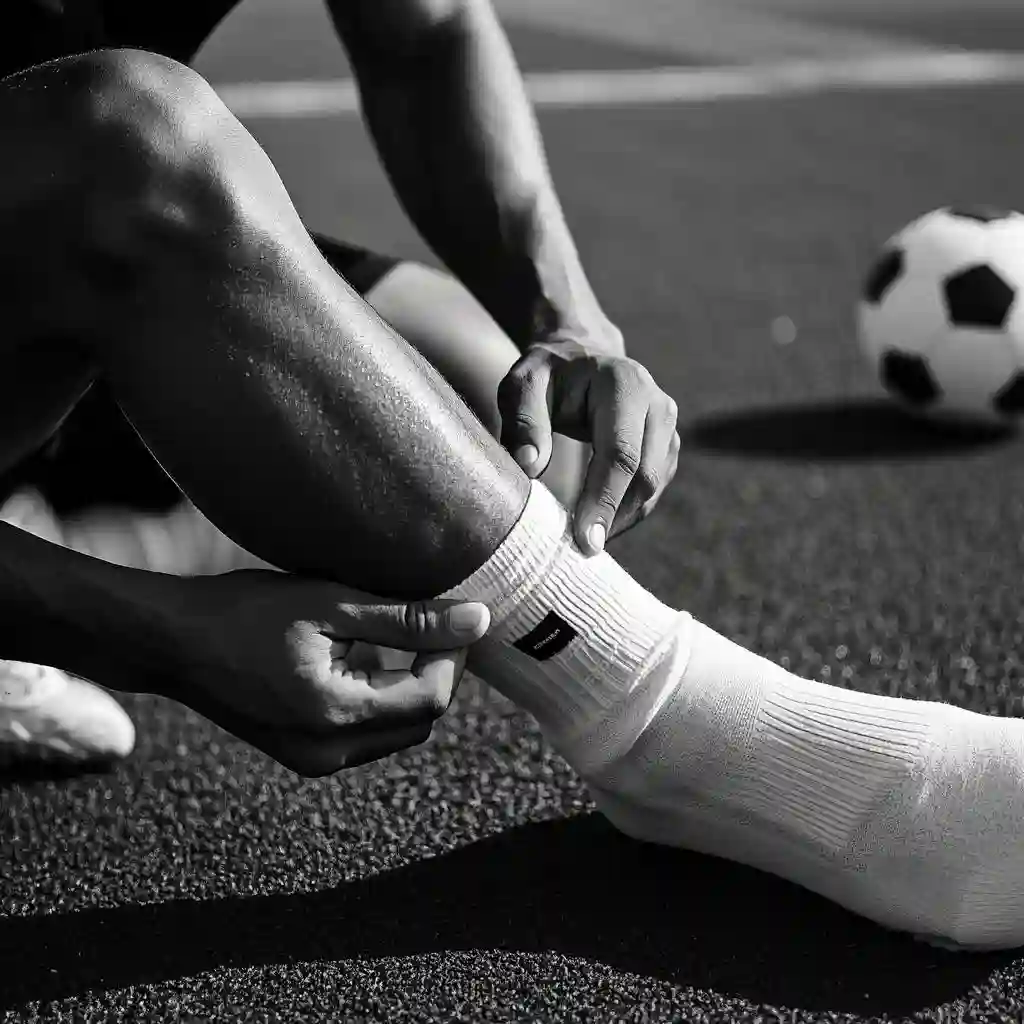
Key Features of the Best Football Socks
When looking for the best football socks, it’s essential to consider several key features. The right combination of material, fit, and functionality can make all the difference when you’re on the field. Whether it’s moisture management, cushioning, or compression, these socks should be designed to meet the specific needs of athletes.
Material and Comfort
The material of football socks significantly affects their comfort and durability. Socks made from a blend of polyester, nylon, and spandex offer the best mix of stretch, moisture-wicking, and breathability. Polyester is lightweight and dries quickly, while spandex provides the elasticity needed for a snug fit. Nylon adds durability, ensuring the socks last longer even after multiple washes. These materials help keep feet cool and dry, reducing the risk of blisters and discomfort during long games.
Support and Compression
Football socks with added compression provide significant benefits, especially in terms of muscle support and circulation. Compression socks help reduce muscle fatigue, improve circulation, and support the muscles, especially in the calves and ankles, which are under constant strain during football. The support offered by compression socks helps prevent injuries such as muscle strains and swelling, allowing players to perform at their best without worrying about fatigue or discomfort.
Breathability and Moisture-Wicking Technology
Breathability is another essential feature. Moisture-wicking socks help keep feet dry by pulling sweat away from the skin and allowing it to evaporate. This is crucial for preventing blisters and reducing foot odor. Socks that feature breathable mesh panels further enhance air circulation, keeping feet cooler and more comfortable throughout the game. Moisture-wicking technology is a must-have for any serious football player, ensuring that your feet stay dry, fresh, and focused on the game.
| Feature | Benefits | Examples |
|---|---|---|
| Material | Flexibility, durability | Polyester, Nylon, Spandex |
| Support | Improved circulation, reduced fatigue | Compression areas in the calf and ankle |
| Breathability | Keeps feet dry, reduces overheating | Mesh panels, moisture-wicking fabric |
Types of Football Socks for Different Needs

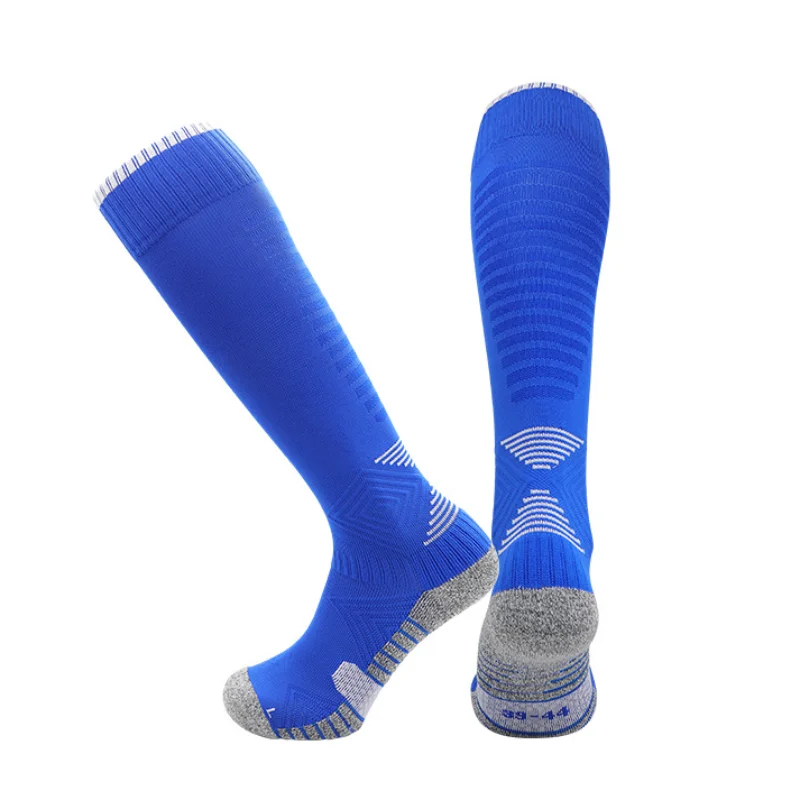

Not all football socks are created equal, and different types serve different purposes. Choosing the right type of football sock depends on your position on the field, the weather conditions, and your personal preferences. Let’s take a look at the different types of socks and how they can enhance your performance.
Grip Socks
Grip socks are becoming more popular among football players for a good reason. These socks feature rubberized grip zones that provide additional traction inside your shoes, ensuring better stability during sudden movements, quick direction changes, or tackles. Grip socks are especially beneficial for players in positions that require fast sprints, like wingers or fullbacks, where quick acceleration and sharp turns are crucial.
Compression Socks
Compression socks are designed to apply gentle pressure to the lower legs, which improves blood flow and reduces muscle fatigue. These socks help support muscles during the game, which can prevent injuries like strains or sprains. Compression socks are also effective in reducing swelling, making them an excellent choice for recovery after intense physical activity. Players in positions that require endurance, such as midfielders, benefit from compression socks, as they help maintain energy levels over the course of the game.
Padded Socks
Padded socks offer additional cushioning in high-impact areas like the heels and the balls of the feet. These socks provide extra protection against impact injuries, such as bruises or blisters, which can occur during tackles or jumps. Padded socks also help with comfort by providing shock absorption, reducing the strain on your feet and joints when making hard landings or taking fast steps.
Ankle vs. Knee-High Socks
Football socks come in both ankle and knee-high lengths. Ankle socks provide less coverage but are ideal for players who prefer more mobility and less bulk. Knee-high socks, on the other hand, provide more coverage and support, especially in the calf area. These are commonly worn by players who need more stability and muscle support, such as defenders or goalkeepers, who are often involved in heavy contact.
| Sock Type | Benefits | Ideal For |
|---|---|---|
| Grip Socks | Enhanced traction and stability | Players in fast-paced positions |
| Compression Socks | Improved blood flow, reduced fatigue | Endurance players, injury prevention |
| Padded Socks | Additional cushioning, injury protection | Players involved in tackles, sprints |
How to Choose the Right Size and Fit
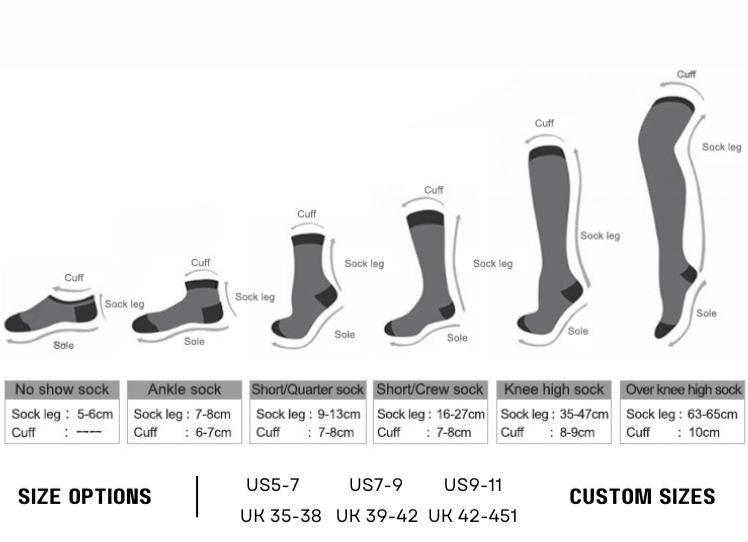
Finding the best football socks that fit well is just as important as choosing the right material or style. Choosing the right fit ensures comfort, prevents blisters, and maximizes your performance on the field. Let’s break down how to choose the right size and fit for your football socks.
How Sock Size Affects Comfort and Performance
The right size football sock should fit snugly without being too tight or too loose. If your socks are too tight, they may restrict circulation and cause discomfort or even cramping. On the other hand, socks that are too loose can slide down during play, leading to distractions and discomfort. The right fit will stay in place without causing any irritation or slipping, allowing you to focus on your game.
Choosing the Right Fit for Different Foot Shapes
Football players come in all shapes and sizes, and the fit of your socks should accommodate your unique foot shape. Players with wider feet may need socks made from more elastic materials to provide a comfortable fit, while players with narrower feet might prefer socks with less stretch. Always check the sizing guide and, if possible, try on different pairs to ensure the best fit for your foot shape.
Why Sock Stretchability Is Important
Stretchability is a crucial feature in football socks. Socks that feature stretchable materials like spandex allow the sock to conform to your foot and calf, providing a snug, supportive fit that won’t slip or bunch up. These socks also offer greater comfort by allowing for more flexibility and movement, which is essential during high-intensity activities like sprints and tackles.
The Benefits of Compression in Football Socks

Compression socks are not just for recovery—they offer several performance-enhancing benefits as well. Compression socks can help improve circulation, prevent injuries, and boost your performance during the game. Here’s a deeper look at why compression is essential for football players.
How Compression Improves Performance
Compression socks work by applying consistent pressure to the lower legs, which helps improve circulation. This increased blood flow helps deliver more oxygen to the muscles, allowing them to work more efficiently and for longer periods. As a result, players can maintain peak performance throughout the game without feeling fatigued or sluggish.
How Compression Helps Prevent Injuries
Compression socks provide support to muscles and joints, which helps stabilize the lower leg during intense movements. This added support reduces the risk of injuries, such as strains or sprains, that often occur during quick direction changes or sprints. Compression also helps reduce muscle vibration, which is a leading cause of fatigue and injury in athletes.
Recommended Compression Levels for Football Socks

Compression socks come in various compression levels, typically ranging from 15-20 mmHg to 20-30 mmHg. For most players, a compression level of 15-20 mmHg is sufficient to improve performance and reduce fatigue. However, players who need extra support or are recovering from an injury may benefit from higher compression levels.
Football Socks for Different Weather Conditions
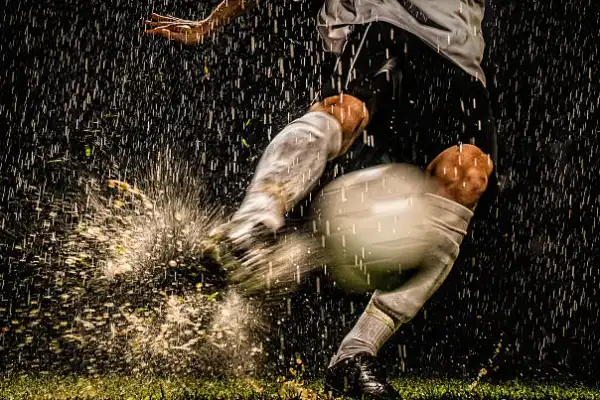
Football is played year-round, and weather conditions can vary greatly. Choosing the right socks for hot, cold, or wet conditions can make a huge difference in comfort and performance.
- Football Socks for Hot Weather
In hot weather, moisture-wicking socks are a must. These socks help keep feet dry by pulling sweat away from the skin and allowing it to evaporate. Breathable fabrics like polyester and merino wool are ideal for hot weather, as they help regulate body temperature and prevent overheating. - Socks for Cold Weather
Cold weather presents a unique challenge. Cold-weather football socks are made from insulating materials like wool or acrylic blends, which help trap warmth while still allowing moisture to escape. These socks provide warmth without sacrificing breathability, ensuring that players’ feet stay comfortable even in the coldest conditions.
How to Choose Socks for Wet Conditions
In wet conditions, grip and waterproofing are key. Waterproof socks are designed with an added waterproof membrane to keep feet dry, even in heavy rain or muddy conditions. These socks also feature additional grip, which helps prevent slipping in wet conditions, ensuring players maintain traction and stability on the field.
The Importance of Moisture-Wicking Technology in Football Socks
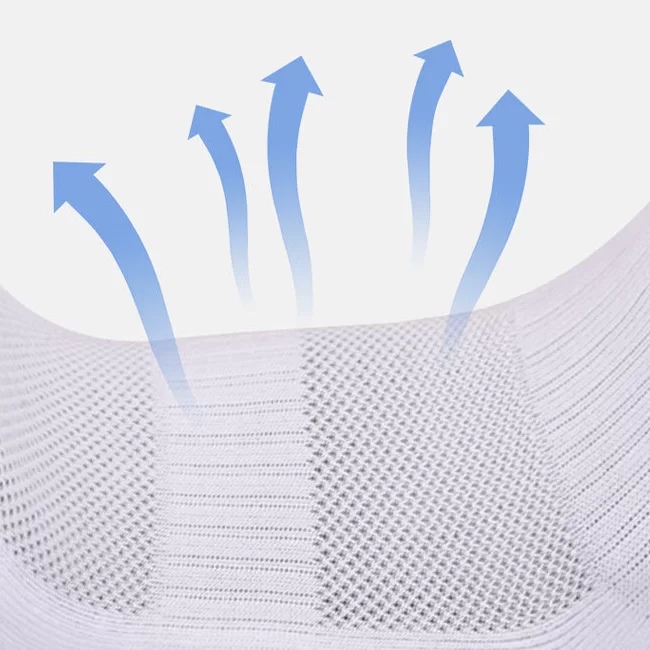
Football socks should keep your feet dry during intense play. Moisture-wicking technology plays a crucial role in preventing blisters, reducing foot odor, and maintaining foot health.
How Moisture-Wicking Keeps Feet Dry and Comfortable
Moisture-wicking socks pull sweat away from the skin and allow it to evaporate, keeping your feet dry. This technology is essential for preventing discomfort, blisters, and fungal infections like athlete’s foot, which thrive in moist environments. Dry feet are not only more comfortable but also healthier in the long term.
Impact on Hygiene and Foot Health
Football players need to take care of their feet. Moisture-wicking socks help prevent bacterial growth and foot odor by ensuring that sweat is absorbed and evaporated quickly. Proper moisture management helps reduce the risk of infections, keeping feet clean, dry, and healthy.
Top Brands Known for Effective Moisture-Wicking Socks
Brands like Nike, Under Armour, and Adidas have invested in moisture-wicking technology. Nike uses its Dri-FIT technology, which efficiently wicks moisture away. Under Armour uses its HeatGear fabric, and Adidas incorporates its Climacool technology to provide the same benefits of dry, fresh feet.
Durability of Football Socks: What to Look For

Football socks undergo a lot of wear and tear, so durability is essential. The best football socks are made to last and withstand intense play. Let’s look at what makes a durable football sock.
Signs of Wear and Tear in Football Socks
Over time, football socks will show signs of wear. Thinning fabric, stretched-out elastic, and frayed seams are all signs that it’s time to replace your socks. Socks that lose their shape or cushioning can no longer provide the support or comfort you need, so replacing them when they show signs of wear is important.
How Often to Replace Your Football Socks
Football socks should be replaced every few months, depending on how often they are used. If you play regularly, replacing your socks every 3-6 months ensures that they continue to provide the support, comfort, and durability you need on the field.
Factors that Influence Sock Durability
The durability of your socks depends on several factors, including the material, frequency of use, and washing habits. High-quality socks made from durable materials like nylon or spandex will last longer, but they still need proper care to maintain their effectiveness. Regular washing and proper storage can significantly extend the life of your socks.
How to Care for Your Football Socks to Make Them Last Longer
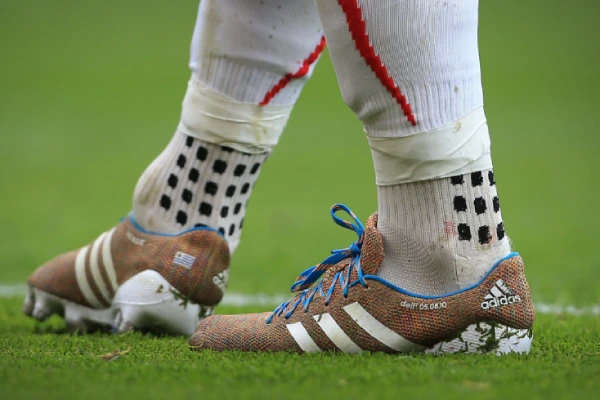
- Regular Football Socks
Wash in cold water to keep elasticity and prevent shrinkage. Avoid fabric softeners, which weaken fibers. Air-dry instead of using a dryer, and don’t wring them out. Store flat in a cool, dry place to maintain shape and comfort. - Grip Football Socks
Grip socks need gentler care because of the silicone dots. Wash them inside out in cold water, avoid direct heat, and let them air-dry. For a step-by-step process, check our guide on how to wash grip football socks.
Top Football Sock Brands to Consider
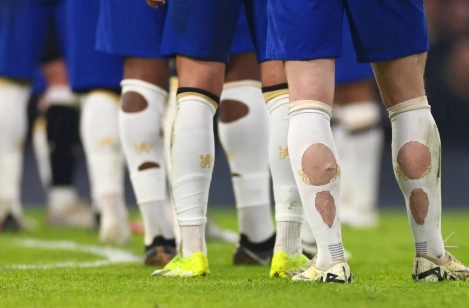
Several brands have made a name for themselves by offering high-quality football socks. Let’s explore the top brands that provide the best socks for football players, ensuring you get both comfort and performance.
Nike
Nike is known for its advanced moisture-wicking technology and high-performance socks. Their Dri-FIT technology keeps feet dry, and their socks provide great support and durability, making them a popular choice among football players.
Under Armour
Under Armour is another brand that offers high-quality football socks designed for optimal performance.Their HeatGear fabric helps wick away sweat, and their socks are known for being durable and comfortable, even in the most demanding conditions.
Adidas
Adidas is a trusted name in sportswear, and their football socks are no exception. Their socks feature Climacool technology to help manage moisture and regulate temperature, ensuring that players stay comfortable during long games.
FAQs
What are the best football socks for blisters?
Moisture-wicking and padded socks work best, as they keep feet dry and reduce friction. Look for anti-blister football socks made with polyester or spandex blends.
Are grip socks worth it for football?
Yes, grip socks improve stability and traction inside boots. They help with quick turns, sprints, and reduce slipping compared to regular football socks.
Can you wear two pairs of football socks?
You can, but it often causes overheating and blisters. A single pair of padded or compression football socks is a better option.
What socks do professional footballers wear?
Most pros wear grip socks like Nike Grip, Adidas Traxion, or Trusox under their team socks for added traction and stability.
Best youth football socks?
Youth football socks should be durable, moisture-wicking, and comfortable. Brands like Nike, Adidas, and Under Armour make reliable options for kids.
Conclusion
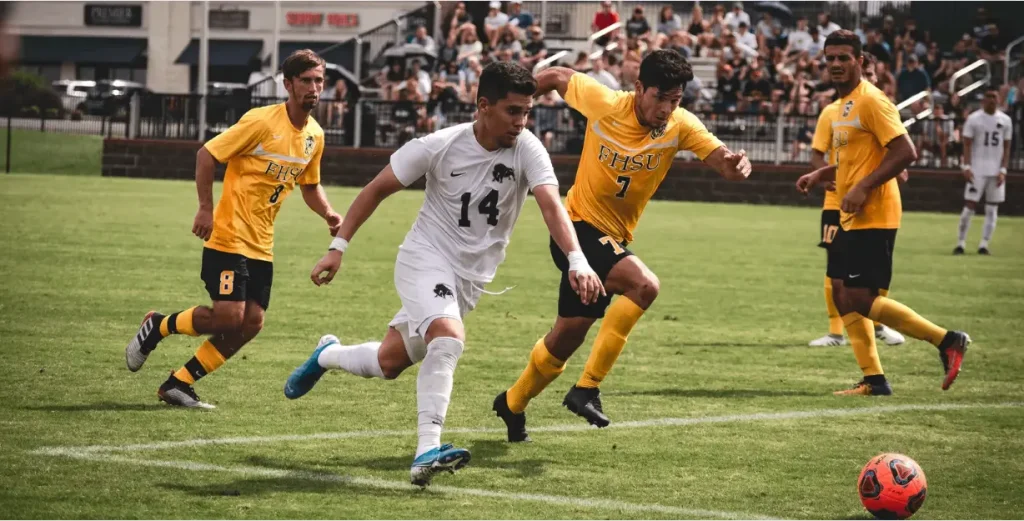
In conclusion, choosing the best football socks is essential for improving comfort, performance, and injury prevention. By focusing on key features like material, support, compression, and moisture-wicking technology, players can ensure they’re wearing socks that enhance their game. Don’t overlook the importance of high-quality socks—investing in the best options will help you perform better, stay comfortable, and avoid common injuries. Ready to take your performance to the next level? Check out our collection of the best football socks and find the perfect pair to suit your needs.
